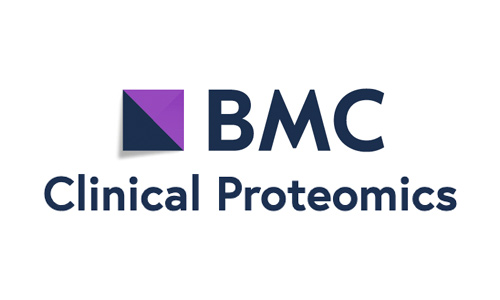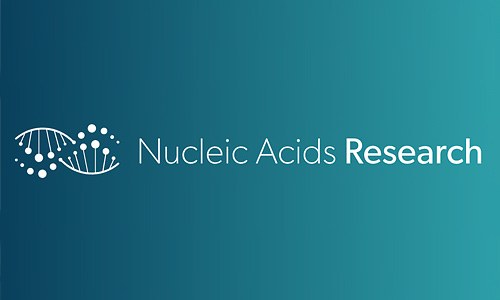- Follow Us
Publications
High-profile publications featuring CDI Labs products and services
275 Total Publications
Refine Your Search
Publication Details
- Date
- Link
- + Abstract

Clinical Proteomics - BMC
- Main Product: HuProt
- HuProt: Plasma proteomic and autoantibody profiles reveal the proteomic characteristics involved in longevity families in Bama, China
- Shengliang Ye, Changqing Li, et. al.
- Institute of Blood Transfusion, Chinese Academy of Medical Sciences and Peking Union Medical College
Chinese Bama Yao Autonomous County is a well-known longevity region in the world. In the past 30 years, population and genome studies were undertaken to investigate the secret of longevity and showed that longevity is the result of a combination of multiple factors, such as genetic, environmental and other causes. In this study, characteristics of the blood plasma proteomic and autoantibody profiles of people from Bama longevity family were investigated.

American Journal of Respiratory and Critical Care Medicine
- Main Product: HuProt
- HuProt: Tumor-derived Autoantibodies Identify Malignant Pulmonary Nodules
- Kristin J. Lastwika, A. McGarry Houghton, et. al.
- Translational Research Program, Public Health Sciences
HuProt Autoantibodies: Screening for non–small cell lung cancer is associated with earlier diagnosis and reduced mortality but also increased harm caused by invasive follow-up of benign pulmonary nodules. Lung tumorigenesis activates the immune system, components of which could serve as tumor-specific biomarkers.

Nature Communications
- Main Product: HuProt
- VirD: Development and application of a high-content virion display human GPCR array
- Guan-Da Syu, Heng Zhu, et. al.
- Dept of Pharmacology and Molecular Sciences, Johns Hopkins Medicine
Human G protein-coupled receptors (GPCRs) respond to various ligands and stimuli. However, GPCRs rely on membrane for proper folding, making their biochemical properties difficult to study. By displaying GPCRs in viral envelopes, we fabricated a Virion Display (VirD) array containing 315 non-olfactory human GPCRs for functional characterization. Using this array, we found that 10 of 20 anti-GPCR mAbs were ultra-specific. We further demonstrated that those failed in the mAb assays could recognize their canonical ligands, suggesting proper folding.

Frontiers in Cellular and Infection Microbiology
- Main Product: HuProt
- HuProt: A Two-Way Proteome Microarray Strategy to Identify Novel Mycobacterium tuberculosis - Human Interactors
- Tingming Cao, Zongde Zhang, et. al.
- Beijing Key Laboratory for Drug Resistant Tuberculosis Research
HuProt PPI: Tuberculosis (TB) is still a serious threat to human health which is caused by mycobacterium tuberculosis (Mtb). The main reason for failure to eliminate TB is lack of clearly understanding the molecular mechanism of Mtb pathogenesis. Determining human Mtb-interacting proteins enables us to characterize the mechanism and identify potential molecular targets for TB diagnosis and treatment. However, experimentally systematic Mtb interactors are not readily available. In this study, we performed an unbiased, comprehensive two-way proteome microarray based approach to systematically screen global human Mtb interactors and determine the binding partners of Mtb effectors.

Nature Scientific Reports
- Main Product: HuProt
- HuProt: ILF2 and ILF3 are autoantigens in canine systemic autoimmune disease
- Hanna D. Bremer, Helene Hansson-Hamlin, et. al.
- Dept of Clinical Sciences, Swedish University of Agricultural Sciences
Dogs can spontaneously develop complex systemic autoimmune disorders, with similarities to human autoimmune disease. Autoantibodies directed at self-antigens are a key feature of these autoimmune diseases. Here we report the identification of interleukin enhancer-binding factors 2 and 3 (ILF2 and ILF3) as autoantigens in canine immune-mediated rheumatic disease. The ILF2 autoantibodies were discovered in a small, selected canine cohort through the use of human protein arrays; a method not previously described in dogs.

Nucleic Acids Research - Oxford Academic
- Main Product: HuProt
- HuProt: Insight into novel RNA-binding activities via large-scale analysis of lncRNA-bound proteome and IDH1-bound transcriptome
- Lichao Liu, Xiaohua Shen, et. al.
- Tsinghua-Peking Center for Life Sciences, School of Medicine and School of Life Sciences
HuProt DNA RNA: RNA-binding proteins (RBPs) play pivotal roles in directing RNA fate and function. Yet the current annotation of RBPs is largely limited to proteins carrying known RNA-binding domains. To systematically reveal dynamic RNA–protein interactions, we surveyed the human proteome by a protein array-based approach and identified 671 proteins with RNA-binding activity. Among these proteins, 525 lack annotated RNA-binding domains and are enriched in transcriptional and epigenetic regulators, metabolic enzymes, and small GTPases.

Molecular & Cellular Proteomics
- Main Product: HuProt
- HuProt: Proteome-wide Tyrosine Phosphorylation Analysis Reveals Dysregulated Signaling Pathways in Ovarian Tumors
- Guang Song, Heng Zhu, et. al.
- Dept of Pharmacology & Molecular Sciences, Johns Hopkins Medicine
HuProt PPI: The recent accomplishment of comprehensive proteogenomic analysis of high-grade serous ovarian carcinoma (HGSOC) tissues reveals cancer associated molecular alterations were not limited to variations among DNA, and mRNA/protein expression, but are a result of complex reprogramming of signaling pathways/networks mediated by the protein and post-translational modification (PTM) interactomes. A systematic, multiplexed approach interrogating enzyme-substrate relationships in the context of PTMs is fundamental in understanding the dynamics of these pathways, regulation of cellular processes, and their roles in disease processes. Here, as part of Clinical Proteomic Tumor Analysis Consortium (CPTAC) project, we established a multiplexed PTM assay (tyrosine phosphorylation, and lysine acetylation, ubiquitylation and SUMOylation) method to identify protein probes\' PTMs on the human proteome array.

Molecular Cell
- Main Product: HuProt
- HuProt: Drp1-Zip1 Interaction Regulates Mitochondrial Quality Surveillance System
- Hyo Min Cho, Jae Ryun Ryu, Youhwa Jo, Tae Woong Seo, Ye Na Choi, June Hoan Kim, Jee Min Chung, Bongki Cho, Ho Chul Kang,...
- Dept of Anatomy, Korea University College of Medicine
Mitophagy, a mitochondrial quality control process for eliminating dysfunctional mitochondria, can be induced by a response of dynamin-related protein 1 (Drp1) to a reduction in mitochondrial membrane potential (MMP) and mitochondrial division. However, the coordination between MMP and mitochondrial division for selecting the damaged portion of the mitochondrial network is less understood. Here, we found that MMP is reduced focally at a fission site by the Drp1 recruitment, which is initiated by the interaction of Drp1 with mitochondrial zinc transporter Zip1 and Zn2+ entry through the Zip1-MCU complex.

AJHG - Cell
- Main Product: HuProt
- HuProt: Parkinson-Associated SNCA Enhancer Variants Revealed by Open Chromatin in Mouse Dopamine Neurons
- Sarah A. McClymont, Andrew S. McCallion, et. al.
- McKusick-Nathans Institute of Genetic Medicine, Johns Hopkins Medicine
HuProt DNA RNA: The progressive loss of midbrain (MB) dopaminergic (DA) neurons defines the motor features of Parkinson disease (PD), and modulation of risk by common variants in PD has been well established through genome-wide association studies (GWASs). We acquired open chromatin signatures of purified embryonic mouse MB DA neurons because we anticipated that a fraction of PD-associated genetic variation might mediate the variants’ effects within this neuronal population. Correlation with >2,300 putative enhancers assayed in mice revealed enrichment for MB cis-regulatory elements (CREs), and these data were reinforced by transgenic analyses of six additional sequences in zebrafish and mice.

AJHG
- Main Product: HuProt
- Parkinson-Associated SNCA Enhancer Variants Revealed by Open Chromatin in Mouse Dopamine Neurons
- Sarah A. McClymont, Paul W. Hook, Alexandra I. Soto, Xylena Reed, William D. Law, Samuel J. Kerans, Eric L. Waite,...
- McKusick-Nathans Institute of Genetic Medicine, Johns Hopkins University School of Medicine
The progressive loss of midbrain (MB) dopaminergic (DA) neurons defines the motor features of Parkinson disease (PD), and modulation of risk by common variants in PD has been well established through genome-wide association studies (GWASs). We acquired open chromatin signatures of purified embryonic mouse MB DA neurons because we anticipated that a fraction of PD-associated genetic variation might mediate the variants’ effects within this neuronal population. Correlation with >2,300 putative enhancers assayed in mice revealed enrichment for MB cis-regulatory elements (CREs), and these data were reinforced by transgenic analyses of six additional sequences in zebrafish and mice.